INNOVATION IN A POST-COVID19 SCENARIO | article | Tuesday, April 13, 2021
TO REGAIN PHYSICAL FREEDOM

Once the pandemic is over, traces of physical confinement will remain very present in individual and collective memory. The lack of freedom of movement, the obligation to stay for weeks within four walls and the impossibility of going away from the cities have fixed memories of an oppression that shakes the body. In a post-pandemic scenario, people will want to go to the other extreme: to be reborn and feel radical vitality at every turn. This concept encompasses the desire to get extra doses of energy, to feel "cooler" indoors, to oxygenate the body in polluted environments, to increase alertness after hours of screen time, and to strengthen immunity in threatening environments.
People will want to completely eradicate the feeling of confinement and experience a renewed sense of freedom. Ongoing contact with nature becomes an objective to be achieved in the short term, as a result of a greater awareness of the positive impact of biological factors on human performance. Materials, ingredients, colors and scents associated with what is natural, pure and organic will generate greater confidence in their toning action. People will seek to incorporate natural elements into the interior and exterior of homes through architecture, decoration and smart devices.
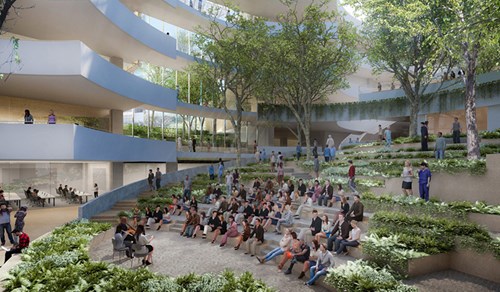

Greater value will be given to all architectural and design resources that will give room to a connection and dialogue with nature: air, vegetation and outdoor light accessible through windows, balconies, terraces, gardens, greenhouses. The boundaries between indoors and outdoors will be blurred through interfaces that create spaces where it is possible to transfer activities from indoors to outdoors, while nature will go indoors to allow close contact with users. Safdie Studio designed the Albert Einstein Education and Research Center with outdoor and indoor gardens integrated with the surrounding vegetation and a roof with a shading system, adapted to the changing climate of São Paulo. Pixel Façade, designed by O. Thomas and K. Rahimzadeh, is a flexible façade system that provides biophilia-rich environments using a series of gardens, shaders, and modular furniture. MVRDV introduced Villa Verde, a hybrid building of offices and residential apartments, with a façade completely covered with potted plants and including a library of trees, to promote well-being in contact with nature.
Hospitality experiences will increasingly be designed to help guests connect with nature, as its therapeutic properties and physical and mental health benefits have been widely recognized. The idea is to seamlessly integrate hotels with natural landscapes so that guests can enjoy the pristine beauty and tranquility of nature. Sharaan is an underground hotel concept designed by French architect Jean Nouvel, which will be completed by 2024. The complex will be built on sandstone cliffs in the Al-'Ula desert of Saudi Arabia, without jeopardizing its history, heritage and landscape. In Jean Nouvel words, “our project should not jeopardize what humanity and time have consecrated.”
The merger of technology and biologics is one of the most promising fields in terms of innovation for household products. Company CleanAirZone introduced a bio-based air purifier that uses “natural biotics and enzymes derived from nature” instead of traditional filters. The device is effective in removing contaminants from a combination of water, microbiotics and natural enzymes. According to the company, this clean, green technology uses the BioCAZ solution to capture and neutralize a variety of indoor air contaminants, including the elimination of coronaviruses, such as COVID-19, among an extensive list of viruses. The system produces no waste or harmful by-products in the process, which helps reduce household waste by operating in an efficient manner.
These new offerings will help people better manage daily stressful situations, reduce chronic fatigue and enhance enjoyment in times of intermittent restrictions that may lie ahead. Finding pleasurable experiences in the nearby community by turning to peers, in a mutually supportive action, will be a strategy to implement. Swimply, the Airbnb of private pools. The company connects pool owners with those looking to cool off in the summer heat, allowing pool rentals from 45 to 60 dollars per hour. The company will soon launch a new platform called Joyspace, where customers will be able to rent private spaces other than pools, such as tennis and basketball courts, home gyms, backyards and private boats, by the hour.
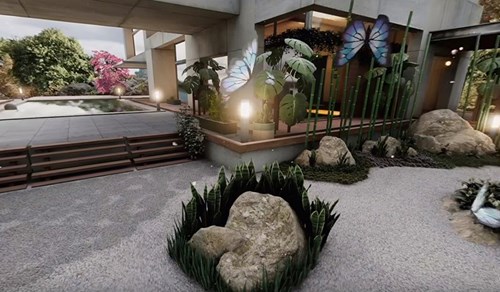
Wellness experiences providing moments of relaxation and escape from reality will be prioritized in order to allow people to get away from any sense of limitation. Not-for-profit organization Forest Bathing International offers virtual baths in nature to reduce stress and anxiety. Through virtual tours on its website, led by guides in different countries, people can receive the beneficial stimuli of seeing vegetation when they are unable to travel. A study conducted by the University of California revealed that watching programs about nature makes people happier. StoryUp's Healium XR meditation tool uses virtual reality to provide relaxation and combat anxiety; users can view worlds that change depending on their brain activity and heart rate. Some airline companies are integrating the experience to their entertainment offers.
Freedom of movement will be one of the biggest debates going forward. The idea of globalization without limits went into crisis when countries imposed restrictions on the entry and exit of people. Global circulation will resume very slowly and under more complex protocols (which could even include a vaccination passport). People will be aware of the movements to be made —both when traveling between cities and within them— optimizing travel under criteria of relevance, sustainability and accessibility. Home delivery services will continue to play an important role for users because of their functionality, convenience and security. The culture of home delivery and the need to reduce waste and the individual carbon footprint have encouraged a number of companies to revamp the old milkman model. Products are delivered and replenished at people’s doors, without the need for additional packaging. Among those companies, London-based Charrli has created glass, refillable bottles for everything from shampoos and conditioners to skin care products and soap that support clean, simple living. The subscription-based home delivery model simplifies the process by avoiding trips to a store to refill toiletries.
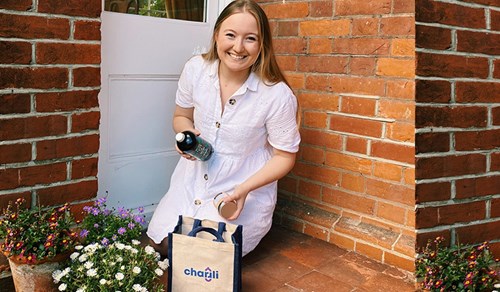
The desire to inhabit smaller cities with more human scales will be driven by the need to circulate simply to carry out daily activities, easily access natural environments, and move freely without depending on anyone in case of a new emergency. The urban space concept will change in favor of smarter, greener and more livable places. Spanish architect Vicente Guallart has designed a housing complex called “the self-sufficient city” for the urban area of Xiong'an, 100 kilometers from Beijing, China. The project consists of four blocks where people can live, work and rest just by moving around the complex. This makes it possible that in times of health, energy or food crises an adequate response can be given, from the housing environment, by means of confinements of varying degrees. The building complex will be built with wood —following the principles of the new circular bioeconomy— and will house a variety of housing spaces, residences for the young and the elderly, offices, a public swimming pool, stores, a market, a kindergarten, an administrative center, and a fire station. This micro-city is designed to produce food for daily consumption from greenhouses, clean energy with the help of solar panels on roofs and everyday objects thanks to a mini digital industrial facility equipped with 3D printers located on the first floors.
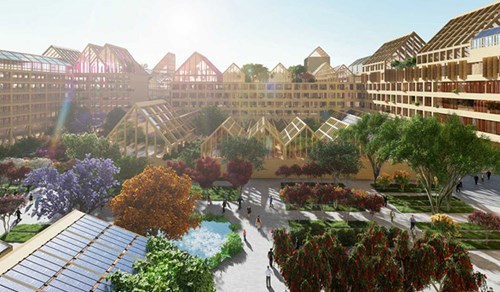
As a consequence of people's desire to live in habitats with the benefits of calm and nature, cities will redefine their conception of urban space by eliminating boundaries with the countryside. Library Degli Alberi (the Library of Trees), a 95,000 square meter green space designed by Inside Outside, includes more than 450 trees and 100 different species of plants, to introduce biodiversity to the city of Milan. The task will be to think of a better relationship between urban needs and wellbeing requirements. Studio EFFEKT has designed a 45-meter-high helical tower that allows visitors to look out over the treetops of the Gisselfeld Klosters forest in Denmark. The tower is part of a path created under the tenet that “nature provides the real experience” in Camp Adventure. "La città diffusa" of Veneto, conceived by Bernardo Secchi and Paola Viganò, in the plains of northeastern Italy, proposes a new relationship between urban architecture and the countryside. Flow between the built and the unbuilt takes shape in hybrid spaces. H-Campus, commissioned to Zanon Architetti Associati by H-Farm, is a 30-hectare multifunctional facility on a stretch of countryside near Treviso and consists of schools for different levels of education (primary, secondary, university), two office buildings, a student residence, and a set of sports fields. Horizontal and transparent buildings merge with the landscape and let it pass through them. Countryside spaces are artificially recreated and enriched with precious elements of biodiversity. Cultivated lands have a continuity within the newly-built facility.
Increased use of bicycles and other micro-mobility solutions, safer than mass public transport and more aligned with post-COVID-19 approaches to living, will continue to be driven by the desire to feel both protected and vital. The rapid improvement in road and pedestrian infrastructure being undertaken in some large cities will facilitate the transition to healthy mobility systems. New York City's mayor has unveiled a radical plan to convert vehicle lanes to bike paths on two bridges over the East River, and to build five bike-only streets downtown. The project seeks to invest in the public health of citizens as a way to recover the city after the pandemic. Other large cities, such as Paris and Milan, are betting on reconverting urban mobility to sustainable alternatives. This is intended to make up for the increased use of private automobiles in the future to avoid public transportation for fear of the spread of other viruses.
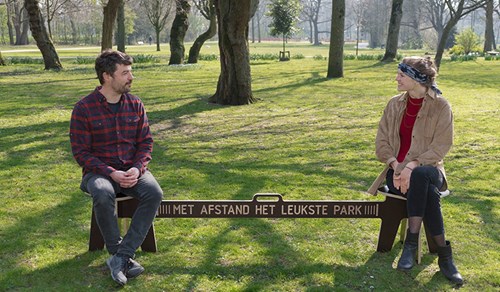
A fundamental task will be to reconcile individual freedom with new social and collective health protocols.The design of public furniture should incorporate social distancing measures to maintain safety without sacrificing the possibility of meeting and creating community. Object Studio, of Amsterdam, has created a park bench that allows people to sit together and therefore socialize, while maintaining the distance dictated by all COVID-19 prevention protocols (1.5 meters). This bench, called CoronaCrisisKruk, is made of CNC-milled birch plywood parts that are slotted and screwed together. Its light weight ensures portability. Studio Aisslinger has designed the Loqi brand office in Berlin, with the aim of encouraging creativity and collaboration within a safe and supportive environment for staff in pandemic times. While considering the strain between these requirements, architects planned the space with a series of distinct but flexible areas that facilitate solitary work but can be reconverted into common spaces for group workshops and other collective activities.

The dismay caused by the pandemic that is putting the way we inhabit the planet in crisis has boosted the public’s interest in space and the possibilities it offers for human life. Massive audiences following the broadcast of SpaceX's and other companies’ tests of passenger transportation to the moon prove it. More and more brands are joining the race to be the first in their category to launch new products, services and experiences in outer space, which many consider the new market to conquer. NASA and Nokia have recently announced a new partnership to install a 4G network on the Moon. While the project initially aims to improve data transmission to help astronauts control lunar rovers, navigate lunar geography in real time and transmit videos, its ultimate goal, according to Bells Labs, Nokia's research arm, is to “validate the potential for human habitation on the Moon.” In a context where freedoms of movement may be restricted in the future, it would seem that people fantasize about escaping to remote locations to find a new sense of liberation.
